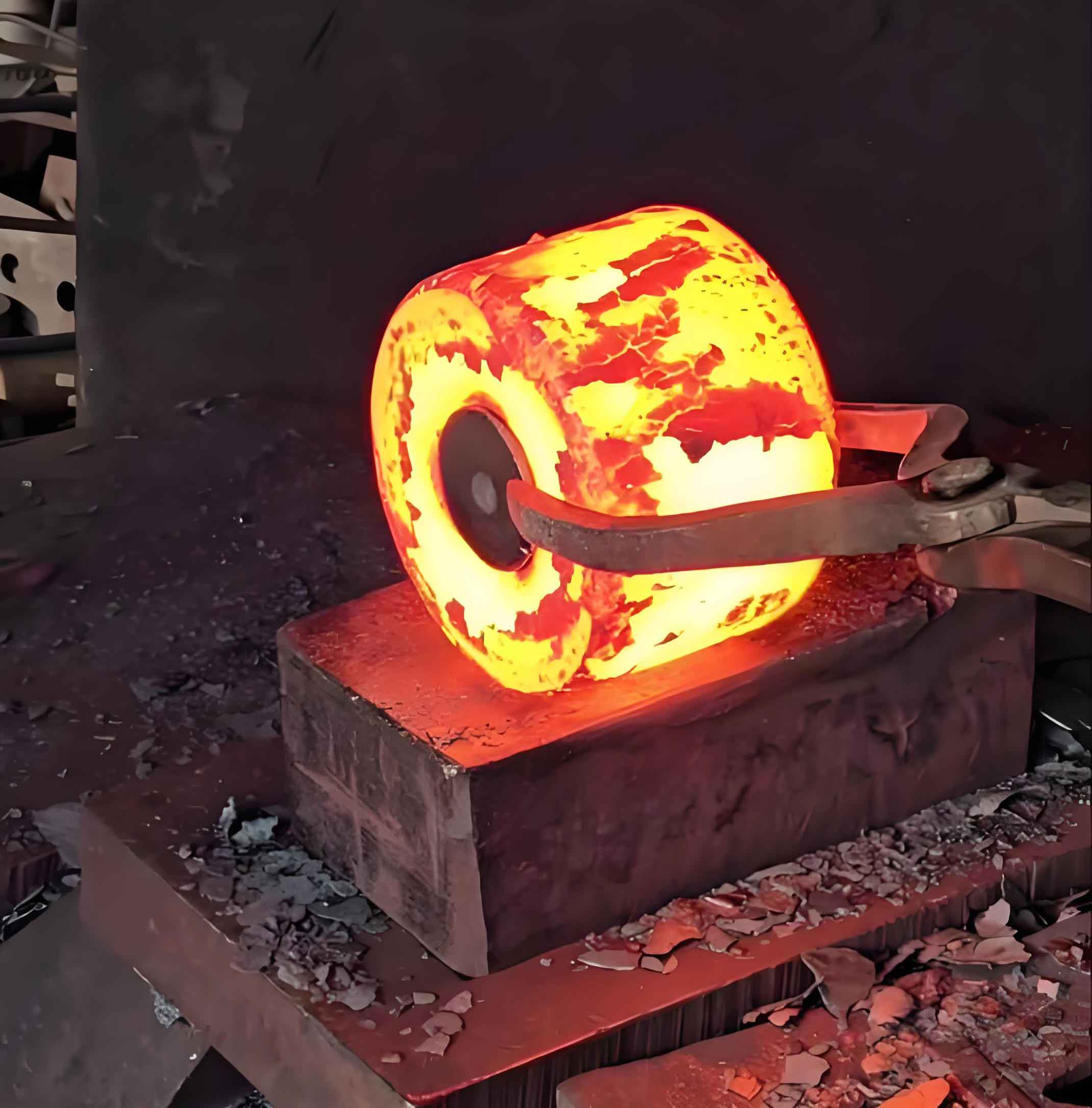To enhance the machinability of transmission gears and stabilize final heat treatment deformation, our company commissioned a continuous pusher-type isothermal normalizing line in 2010 for forged gear blank preprocessing. After one year of process optimization, we identified cooling uniformity during rapid quenching as the critical challenge. Temperature homogeneity directly determines microstructure and hardness consistency in forged gear blanks. This article analyzes factors influencing cooling uniformity and proposes control methodologies.

1. Loading Configuration
Improper loading configuration remains the primary cause of temperature deviation in forged gear blanks. Suboptimal arrangements cause faster cooling of peripheral forged gear blanks versus core components, creating significant hardness gradients. Optimal loading must ensure unobstructed airflow between forged gear blanks with deliberate spacing to prevent airflow diversion. Consider these configurations:
| Configuration | Airflow Direction | Temperature Differential (°C) | Microstructure | Production Efficiency |
|---|---|---|---|---|
| Horizontal stacking | Vertical periodic | >80 | Non-uniform | Low |
| Width-aligned stacking | Vertical periodic | ≈40 | Pearlite + Ferrite | High |
Width-aligned stacking maximizes effective heat dissipation zones while maintaining production throughput. For duplex forged gear blanks with significant sectional variations, horizontal orientation with gear faces aligned to airflow prevents bainite formation at connecting regions:
$$ \frac{\partial T}{\partial t} = \alpha \nabla^2 T – \frac{h}{\rho C_p} (T – T_{\text{air}}) $$
where \( \alpha \) is thermal diffusivity, \( h \) is convective coefficient, \( \rho \) is density, and \( C_p \) is specific heat.
2. Cooling Rate Optimization
Cooling rate critically determines phase transformation uniformity in forged gear blanks. Excessive cooling induces bainitic transformation at surfaces, while insufficient cooling causes coarse pearlite. Modern systems employ staged cooling: forced-air quenching followed by controlled slow cooling. Parameters vary by forged gear blank geometry:
| Thickness (mm) | Forced Cooling (s) | Slow Cooling (s) | Target Temp (°C) |
|---|---|---|---|
| ≤20 | 150–210 | 120–180 | 700±15 |
| 20–40 | 180–270 | 180–240 | 700±15 |
| 40–60 | 210–330 | 180–240 | 700±15 |
The heat extraction rate follows Newton’s cooling law:
$$ \frac{dQ}{dt} = h A (T_{\text{blank}} – T_{\text{air}}) $$
where \( A \) is surface area and \( h \) is heat transfer coefficient.
3. Ambient Temperature Compensation
Systems using ambient air require seasonal parameter adjustments. Higher temperatures reduce thermal transfer efficiency, necessitating extended cooling or increased airflow:
| Ambient Temp (°C) | Forced Cooling (s) | Slow Cooling (s) | Airflow Adjustment |
|---|---|---|---|
| >30 | 240 | 210 | +15% |
| 10–30 | 210 | 180 | Baseline |
| <10 | 180 | 180 | -10% |
The modified convective coefficient \( h’ \) under varying ambient conditions is:
$$ h’ = h_0 \left(1 + \beta \Delta T_{\text{amb}}\right) $$
where \( \beta \) is the thermal compensation factor (0.02°C⁻¹).
4. Heating Temperature Strategy
Heating temperature reduction minimizes thermal gradients during cooling of forged gear blanks. Our standard protocol sets normalizing temperatures 10–30°C above carburizing temperature (930°C) to monitor grain growth tendency:
$$ \frac{dG}{dt} = k \exp\left(-\frac{Q}{RT}\right) $$
where \( G \) is grain size, \( k \) is kinetic constant, and \( Q \) is activation energy.
5. Technical Implementation Framework
Process control requires integrated parameter optimization for forged gear blanks:
$$ \tau_c = \frac{\rho C_p V}{hA} \ln \left(\frac{T_i – T_{\infty}}{T_f – T_{\infty}}\right) $$
where \( \tau_c \) is cooling time, \( V \) is volume, \( T_i \) initial temp, \( T_f \) final temp, and \( T_{\infty} \) ambient temp.
6. Conclusions
Through systematic optimization of loading configurations, cooling parameters, ambient compensation, and thermal profiling, we achieve consistent hardness (160–180 HB) and microstructure (90–95% pearlite) in forged gear blanks. Remaining challenges include complex geometry optimization and real-time thermal monitoring. Future work will focus on computational fluid dynamics modeling for forged gear blank thermal management.
